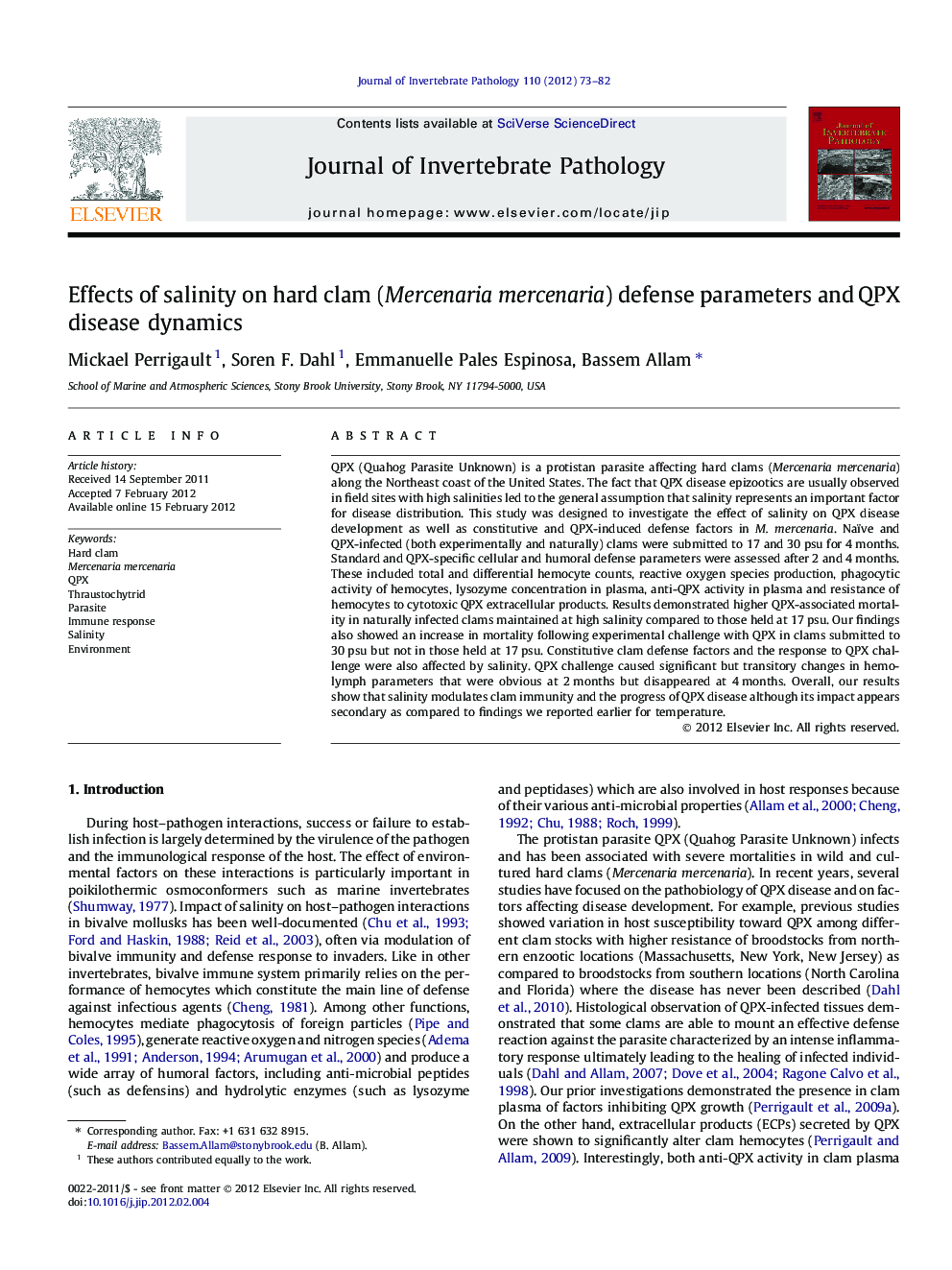| Article ID | Journal | Published Year | Pages | File Type |
|---|---|---|---|---|
| 4557925 | Journal of Invertebrate Pathology | 2012 | 10 Pages |
QPX (Quahog Parasite Unknown) is a protistan parasite affecting hard clams (Mercenaria mercenaria) along the Northeast coast of the United States. The fact that QPX disease epizootics are usually observed in field sites with high salinities led to the general assumption that salinity represents an important factor for disease distribution. This study was designed to investigate the effect of salinity on QPX disease development as well as constitutive and QPX-induced defense factors in M. mercenaria. Naïve and QPX-infected (both experimentally and naturally) clams were submitted to 17 and 30 psu for 4 months. Standard and QPX-specific cellular and humoral defense parameters were assessed after 2 and 4 months. These included total and differential hemocyte counts, reactive oxygen species production, phagocytic activity of hemocytes, lysozyme concentration in plasma, anti-QPX activity in plasma and resistance of hemocytes to cytotoxic QPX extracellular products. Results demonstrated higher QPX-associated mortality in naturally infected clams maintained at high salinity compared to those held at 17 psu. Our findings also showed an increase in mortality following experimental challenge with QPX in clams submitted to 30 psu but not in those held at 17 psu. Constitutive clam defense factors and the response to QPX challenge were also affected by salinity. QPX challenge caused significant but transitory changes in hemolymph parameters that were obvious at 2 months but disappeared at 4 months. Overall, our results show that salinity modulates clam immunity and the progress of QPX disease although its impact appears secondary as compared to findings we reported earlier for temperature.
Graphical abstractEffect of salinity treatment and QPX challenge on hemolymph parameters in the hard clam, Mercenaria mercenaria. Principal components 1 and 2 extracted from Principal Component Analysis using a combination of 10 hemolymph parameters are plotted for different clam treatments. Salinity treatment caused significant changes in hemolymph factors, and effects of QPX challenge were most noticeable in clams maintained at 30 psu.Figure optionsDownload full-size imageDownload as PowerPoint slideHighlights► We investigated the effect of salinity on immunity and QPX disease development in clams. ► QPX-associated mortality was higher in clams maintained at 30 psu compared to 17 psu. ► Constitutive clam defense factors and their response to QPX challenge were also affected by salinity. ► Nevertheless, the effect of salinity appears secondary as compared to that we reported earlier for temperature.
